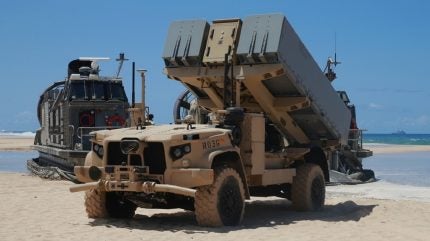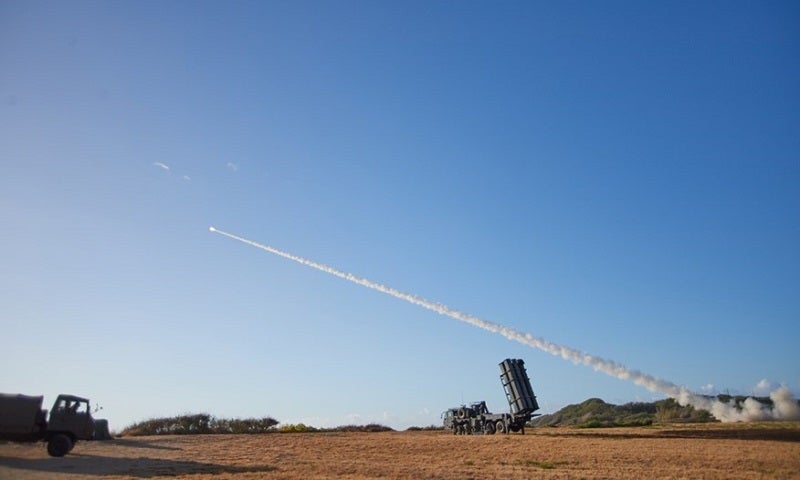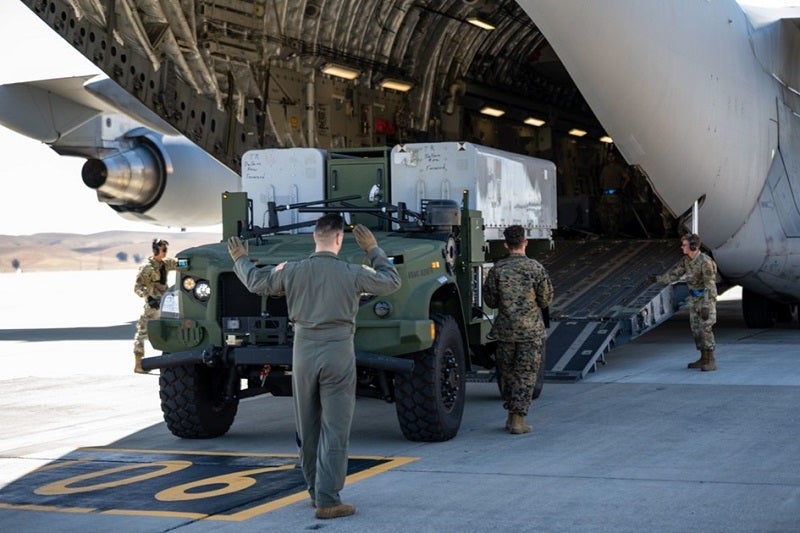
The Navy Marine Expeditionary Ship Interdiction System (NMESIS) has finally entered low rate initial production (LRIP) after being sidelined since it was deployed for the first time three years ago.
At the end of April 2024, the US Department of Defense settled a contract with Raytheon, an RTX business, to deliver the system for the first time in a deal worth nearly $50m. These LRIP units are due to be completed by August 2027 according to contract details.
NMESIS is a mobile, ground-based, anti-ship weapon system deployed by a small team within the littoral environment intended to support land-to-sea attacks for the US Marine Corps (USMC)
It features the Naval Strike Missile (NSM) supplied by Raytheon and Kongsberg. The missile can escape enemy radars by performing manoeuvres and flying close to sea level. It carries a 226.79 kilogramme (kg) class warhead and programmable fuse.
The NSM is mounted atop the chassis of an uncrewed version of Oshkosh’s Joint Light Tactical Vehicle, which is known as the Remotely Operated Ground Unit for Expeditionary Fires.
NMESIS is not considered an autonomous launcher as its fire control system is not controlled by the self-driving system and autonomy technology. It is operated by a marine who is responsible for mission planning and firing of the missile.
Timeline
The USMC and Raytheon successfully tested NMESIS for the first time off the coast of California in April 2021. An NSM was fired from the system against a surface target at sea.
It was later successfully demonstrated at the Sink at Sea Live Fire Training Exercises (SINKEX) in Hawaii four months later. SINKEX is a part of the US Navy’s Large-Scale Exercise 2021, a triennial exercise designed to test the operating concepts of the Navy and USMC.
In the same year, the USMC also managed to transport the system on board a C-130 transport aircraft and a Landing Craft Air Cushion watercraft.
“Though this is not associated with the programme development, NMESIS transportability and mobility demonstrated the ability to develop tactics, techniques and procedures related to this critical capability,” the USMC acknowledged in a statement at the time.

In July 2022, NMESIS was deployed again in a sinking demonstration during the international, biennial Rim of the Pacific maritime warfare exercise.
US Marines with Fox Battery, 2nd Battalion, 11th Marine Regiment, 1st Marine Division, fired an NSM from a NMESIS again on 28 June 2023 at Naval Air Station Point Mugu, California.
Two months later, marines also successfully deployed the system aboard a C-17 Globemaster III.
Officials noted that NMESIS would support the Force Design 2030 programme, by allowing a small crew of Marines to operate in forward environments with minimal detectability.

What does the system bring to the table?
NMESIS – which integrates several proven systems – exemplifies the flexible procurement policy that many governments are taking across defence recently.
Defence procurement agencies are seeking to build on existing platforms through integration. This allows the armed forces to acquire what they need at pace in a security climate that now demands timely delivery.
Moreover, the USMC is developing and fielding new anti-surface warfare weapons capabilities, including NMESIS, on pace to support Force Design 2030 objectives.
These new capabilities contribute to the fleet’s ability to achieve sea control, sea denial and defence against adversarial amphibious force missions.




